NOVAMEAL: High-Quality Bypass Protein
Educational Webinar Series #1:
PRESENTER: Dr. Mark Hanigan, Ph.D. from Virginia Tech University
The Latest in Amino Acid Research Webinar
Dr. Hanigan will be presenting on amino acid dynamics, including the independent and additive response of leucine and isoleucine and a sneak peak of some new research from his doctoral graduate.
MORE ABOUT DR. HANIGAN: Dr. Hanigan began his career as a dairy farmer in western Iowa followed by a B.S. in Dairy Science from Iowa State University, an M.S. in Animal Science from UC-Davis, a Ph.D. in Nutrition from UC-Davis, and post-doctoral work in Biochemistry and Biophysics at UC-Davis. He joined the Dairy Research group at Purina Mills in 1993 and moved to the Dept. of Dairy Science at Virginia Tech in 2005.
Educational Webinar Series #2:
PRESENTERS: Dr. Mark Hanigan, Ph.D. from Virginia Tech University & Steve Martin, practicing field Nutritionist
Optimized vs. Non-Optimized Rations
Are you leaving dollars on the table? Learn some tips and tricks to leverage your knowledge with the power of optimization and feed your producers bottom line. Join Dr. Mark Hanigan from Virginia Tech & practicing field Nutritionist, Steve Martin for an educational Webinar on Ration Optimization.
Dr. Hanigan will be presenting an overview of linear and nonlinear optimization including its similarities and differences. How to visualize and analyze nonlinear “hilltops” for maximum outputs. Steve will share views from his field experiences and ways to improve the success of optimizations and present some real-time ration examples. Novita Nutrition, producer of NovaMeal, is pleased to continue their education webinar series for Nutritionists and Dairy Professionals.
RATION REFORMULATION
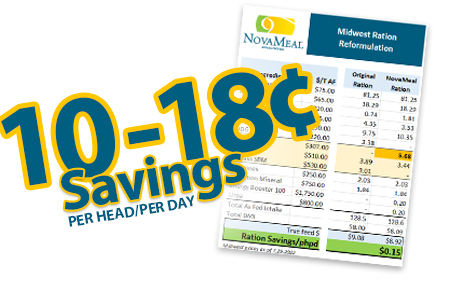
MIDWEST Ration Reformulation
Shows a 18¢ savings per head per day by reformulating 5.68 pounds of NovaMeal into the ration by removing bypass SBM and DDGS and slightly reducing SBM.
SOUTHWEST Ration Reformulation
Shows a 10¢ cost increase per head per day to replace NovaMeal and still obtain the same nutrient flow, the ration would need to add in rumen protected methionine and bypass soybean meal, increase canola meal and sorghum silage along with other slight ingredient modifications.
CALIFORNIA Ration Reformulation
Shows a 20¢ savings per head per day by reformulating out AminoPlus and increasing both NovaMeal and Canola Meal (along with other slight reformulation adjustments). This California ration is being fed to several high performing herds in the Central Valley with ECM over 100 lbs/day. This reformulation resulted in slightly increased ME Allowable Milk and MP Allowable Milk. Nutrient flow slightly improved Metabolizable Protein Available, Branch Chained, Core 5 and Total Essential Amino Acids. These high performing herds have been on NovaMeal for years and the nutritionist reformulated using a software optimizer. The cows transitioned to this new diet without change in performance.
RESEARCH BRIEFS
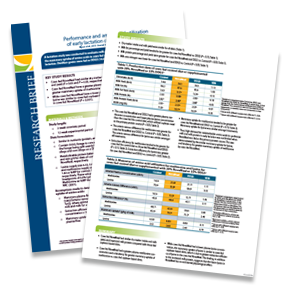
Performance and amino acid utilization of early lactation cows fed NovaMeal
Mjoun et al., 2010. Journal of Dairy Science. 93:3176-3191.A lactation study was conducted to evaluate milk production, milk composition, plasma metabolites and the mammary uptake of amino acids in cows fed distillers grains as the primary protein supplement in early lactation. Distillers grains were fed as DDGS (10.8% fat, 31.3% CP) or NovaMeal (3.5% fat1, 34.0% CP).
Key Study Results
- Cows fed NovaMeal had similar dry matter intake and milk yield, and increased milk protein percentage and yield (P = 0.03 and P = 0.05, respectively) compared with those fed soybean-based diets.
- Cows fed NovaMeal have a greater plasma methionine concentration (P < 0.001) and a tendency for greater mammary uptake of methionine (P = 0.07) vs. cows fed soybean-based diets.
- While cows fed NovaMeal have a lower plasma lysine concentration (P < 0.01), the mammary uptake of lysine was similar to cows fed soybean-based diets, which is due to greater extraction efficiency of lysine in cows fed NovaMeal (P < 0.001).

Performance and amino acid utilization of mid-lactation cows fed increasing amounts of NovaMeal
Mjoun et al., 2010. Journal of Dairy Science. 93:288-303.A lactation study was conducted to evaluate the effects of feeding increasing amounts of NovaMeal1 (3.5% fat, 34.5% CP) at the expense of soybean products to mid-lactation dairy cows on milk production, milk composition, plasma metabolites and the mammary uptake of amino acids.
Key Study Results
- Milk fat increased as the level of NovaMeal in the diet increased (P < 0.05), while milk protein increased up to 20% inclusion of NovaMeal (P < 0.05; Table 1). Dry matter intake and milk yield were similar for all diets.
- Plasma methionine concentration increased as the level of NovaMeal in the diet increased (P < 0.05), and plasma lysine decreased as level of NovaMeal in the diet increased (P < 0.05).
- The mammary uptake of both methionine and lysine was similar for all diets, demonstrating that the high demand for metabolizable amino acids to synthesize milk and milk protein was not limited when NovaMeal was fed as the primary protein source, up to 30% inclusion.

Ruminal degradability and intestinal digestibility of protein and amino acids in NovaMeal and other common soybean and corn protein sources
A study was conducted to compare ruminal degradation and intestinal digestibility of protein and amino acids of different protein sources (NovaMeal, as well as common soybean and corn protein sources), using in situ and in vitro techniques.Mjoun et al., 2010. Journal of Dairy Science 93:4144-4154.
Key Study Results
- NovaMeal had the greatest RUP and lowest RDP of the protein sources evaluated.
- NovaMeal had the greatest RUPD (RUP digestibility) of the protein sources evaluated.
- NovaMeal had the lowest ruminal degradation of methionine. Intestinal digestibility of methionine did not differ by source, suggesting greater intestinal absorption of methionine from NovaMeal.
- Lysine content both after rumen incubation and intestinal digestibility of lysine were greatest for soybean sources vs. corn sources. However, the amount of lysine absorbed intestinally did not differ between NovaMeal and soybean meal.
- These results suggest that methionine and lysine availability can be comparable between soybean and corn sources, and one must look further than amino acid composition of the feedstuff when evaluating feeds for a diet.
RESOURCES
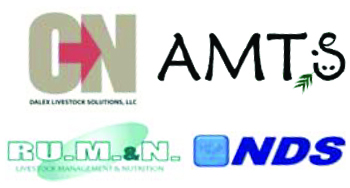
Request Feed Libraries
View the NovaMeal
Average Analysis
Third-Party Results from Cumberland Valley Analytical Services (CVAS)
Detailed lab results are available to our customers and their nutritionists. Just ask - click to email us now!
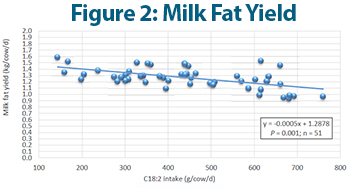
Milk Fat Yield Declines with Increased Levels of Linoleic Fatty Acid
Based on finding from a recent research study from the Dairy Knowledge Center (DKC), for every 100 grams of unsaturated fat called linoleic fatty acid fed there is a .18% loss of milk fat yield.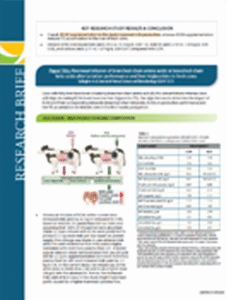
BCAA Supplementation Improved Milk Production
Based on research published in 2024, this brief summarizes the key points from a report on a positive milk production response when increasing the levels of bypass branched chain amino acids.
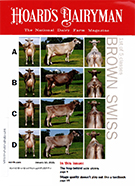
Ration Formulation Has Come a Long Way
Nutritionists have many things to consider when formulating a ration. Read about a formulation approach that offers the producer the best opportunity to convert feed dollars to milk income at the highest rate.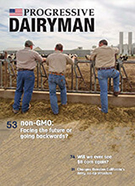
Moving Beyond Crude Protein
Nutritionists are moving beyond evaluating feed sources by crude protein or the quantity of protein. Protein is being evaluated based upon the quality of the protein. The amount and quality of protein available varies by feed source.
Burning Questions to Save Money on Feed Costs
Low milk prices can have a real impact on dairy farmers. When this occurs, cash becomes short and farmers have to make some tough decisions. They start to look for ways to reduce expenses while also maintaining milk production. Typically, the biggest expense for a dairy farm is feed costs – both purchased and farm-produced.PH: 605.610.0976
Brookings, SD 57006

